Oscar de la Renta is a name that has become synonymous with timeless elegance and luxury in the fashion world. Born in the Dominican Republic in 1932, de la Renta’s journey from a small island nation to the heights of haute couture is nothing short of extraordinary. After honing his craft under the legendary designers Cristóbal Balenciaga and Antonio del Castillo, de la Renta made his mark on the global stage in the 1960s, quickly becoming the designer of choice for Jacqueline Kennedy and other prominent figures. His ability to blend classic elegance with a modern sensibility has earned him a lasting legacy, and his designs continue to be celebrated worldwide.
Throughout his illustrious career, Oscar de la Renta worked with some of the most prestigious fashion houses, including Lanvin and Balmain, where he became the first Dominican to design for a French couture house. His move into ready-to-wear fashion in the 1960s, following the advice of Vogue’s Diana Vreeland, showcased his versatility and business acumen, allowing him to expand his influence beyond the elite circles of haute couture. When he took over the Jane Derby label in 1965, de la Renta’s name became a powerful brand in its own right, known for its impeccable craftsmanship and luxurious designs that appealed to women of all ages and backgrounds.
As the decades passed, Oscar de la Renta continued to evolve and expand his brand, introducing bridal wear in 2006 and achieving significant international growth under the leadership of CEO Alex Bolen. His work has been recognized with numerous awards, including the CFDA Lifetime Achievement Award and France’s Légion d’honneur. Even after his passing in 2014, de la Renta’s influence remains strong, with his designs still seen on red carpets and in high-fashion boutiques around the world. The brand he built is a testament to his enduring vision of beauty, grace, and sophistication.
1993 Oscar de la Renta Fashion Show
How to tell if Oscar de la Renta is vintage from the logo
Oscar de la Renta has been a name synonymous with luxury and sophistication since the 1960s. Known for its exquisite evening wear and elegant designs, the brand’s logo has remained a key identifier of its products. While the Oscar de la Renta logo has undergone minimal changes, recognizing these subtle shifts can help determine the vintage of an item.
1960s to now Oscar de la Renta logo
- The logo is a stylized signature of “Oscar de la Renta,” reflecting the personal touch and high-end craftsmanship of the brand.
- Since the 1960s, the logo has maintained its handwritten script style, which is both elegant and easily recognizable.
- The flowing, cursive font conveys the luxurious and timeless nature of the brand.
- Over the decades, the logo has seen very little alteration, making it a consistent identifier across the brand’s long history.
- Because the logo has changed so little, identifying the era of Oscar de la Renta items relies more on other details like fabric, style, and tags rather than on the logo itself.

1960s to now Oscar De La Renta logo
How to tell if Oscar de la Renta is vintage from the tags
The evolution of Oscar de la Renta tags reflects the brand’s journey through different fashion eras. From the sophisticated elegance of the early years to more modern and varied designs, each decade’s tags offer a glimpse into the brand’s legacy. Identifying the era of an Oscar de la Renta garment can be done by examining the style, font, and overall design of the label. Below is a breakdown of the tag styles by decade to help you determine if your Oscar de la Renta piece is vintage.
Having difficulty identifying vintage tags or labels? Submit a picture on our vintage tag identification page, and we’ll assist you!
1960s vintage Oscar de la Renta tags
- The tags from this era often feature a simple and elegant script font.
- Commonly seen is the full name “Oscar de la Renta” in a flowing cursive script.
- Tags are usually made of soft, silky fabric, often in off-white or beige colors.
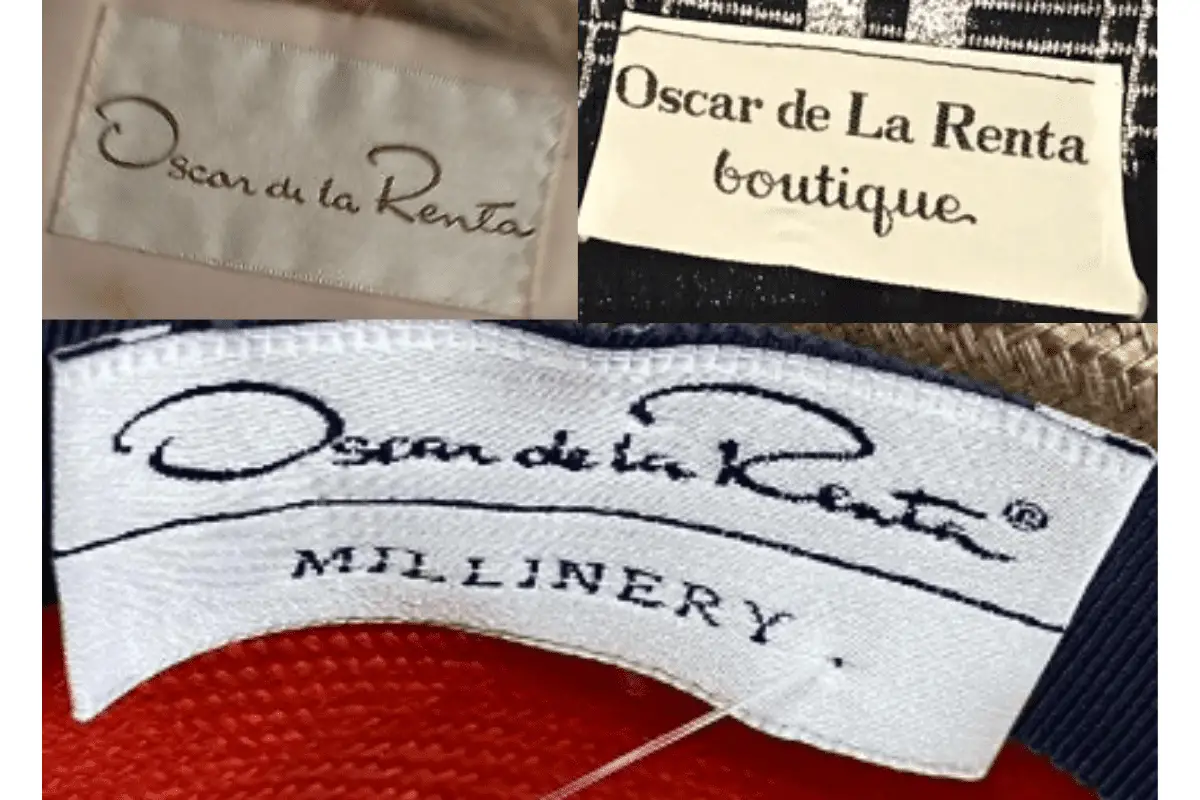
1960s Oscar de la Renta tags
1970s vintage Oscar de la Renta tags
- The font remains elegant, with a slightly more modern and bold cursive script.
- Introduction of “Oscar de la Renta boutique” tags, reflecting the expansion of the brand’s reach.
- Tags often have a more structured and rectangular shape with borders.
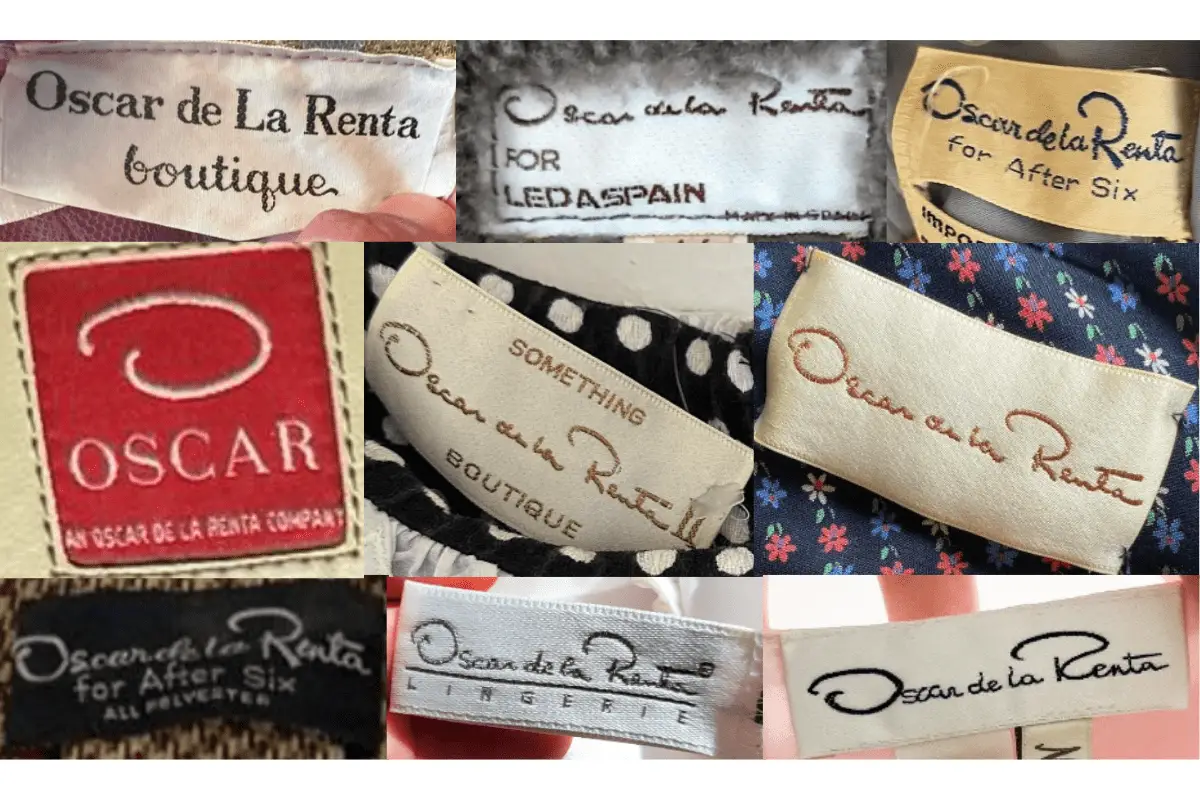
1970s Oscar de la Renta tags
1980s vintage Oscar de la Renta tags
- The tags during this decade often incorporate both cursive and serif fonts, mixing modernity with tradition.
- Bold colors, such as red, become more common, reflecting the brand’s evolution into a more diverse fashion label.
- Specialty tags for collections like “Oscar de la Renta for After Six” and other collaborations start appearing.
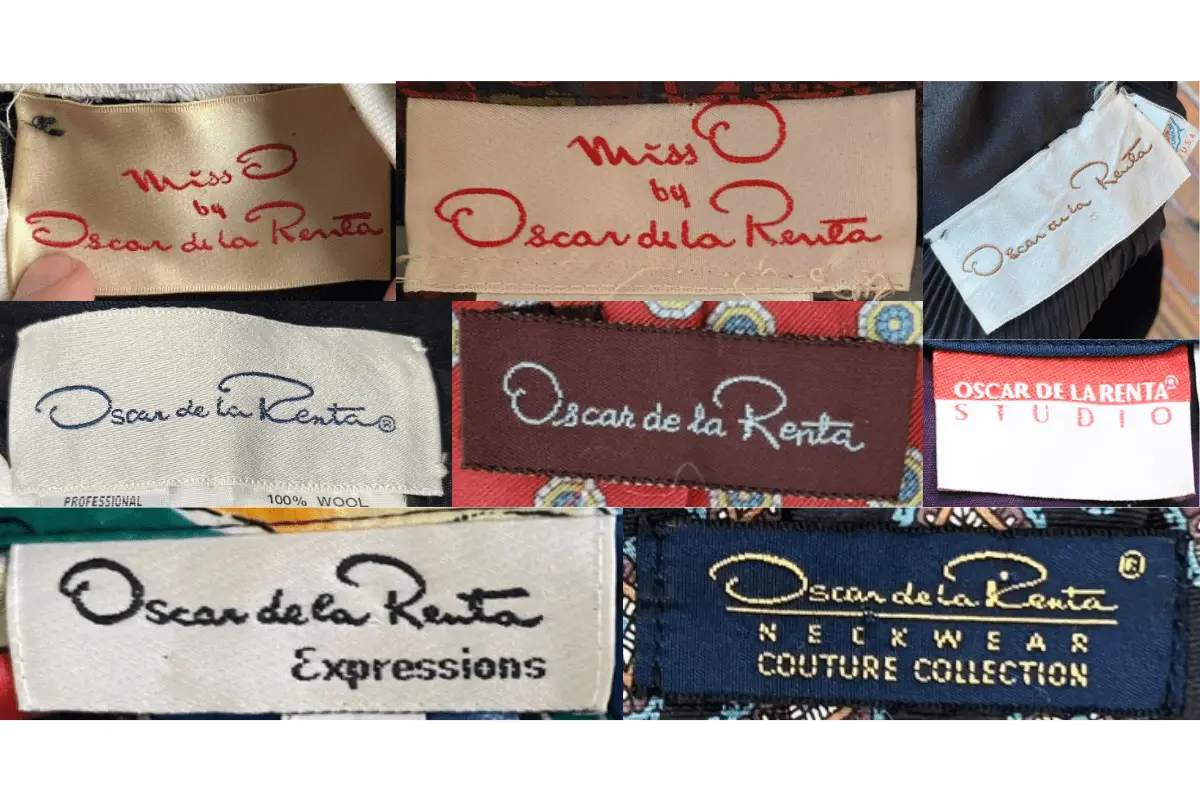
1980s Oscar de la Renta tags
1990s vintage Oscar de la Renta tags
- Tags from this era are more varied, with different collections like “Oscar de la Renta Studio” and “Oscar de la Renta Expressions.
- Continuation of both bold and elegant fonts, but with a more streamlined and modern look.
- Special collections, such as neckwear or couture collections, have distinct, sometimes more luxurious tags.
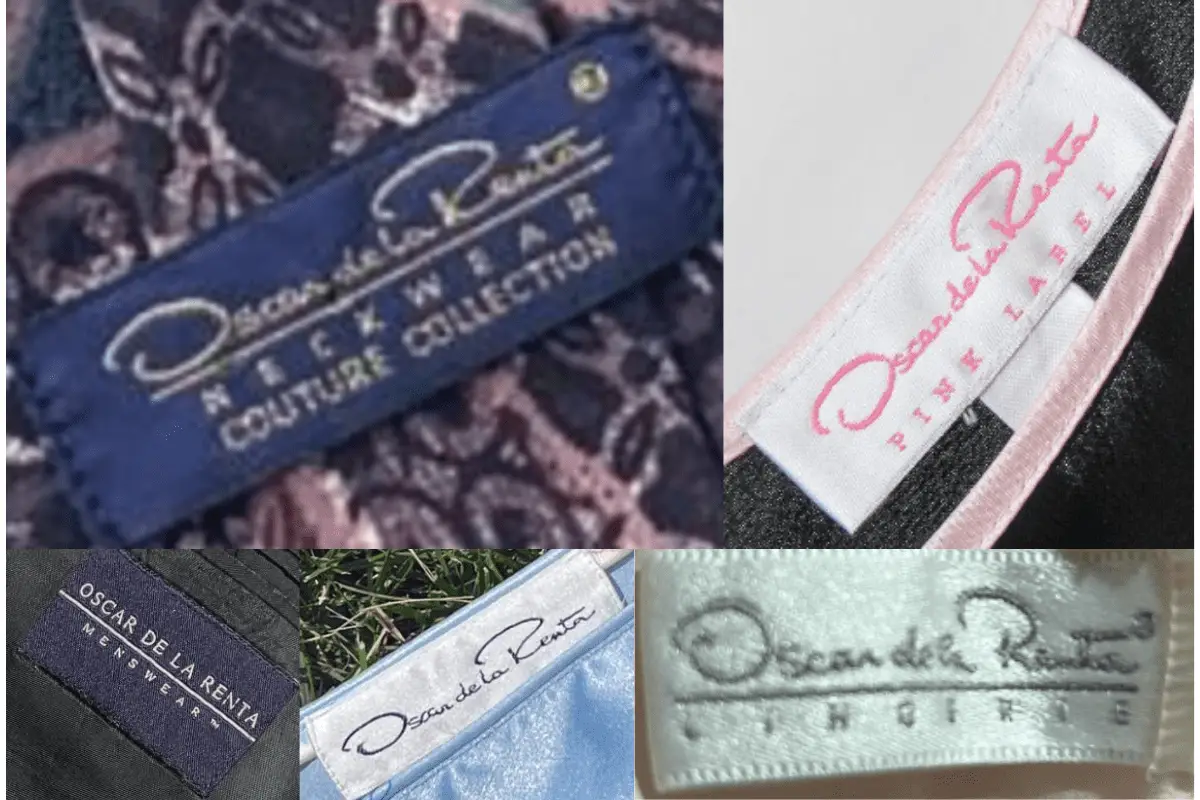
1990s Oscar de la Renta tags
2000s vintage Oscar de la Renta tags
- Modernization of the brand’s image with more simplistic and sleek tag designs.
- The Oscar de la Renta name remains prominent, but with cleaner lines and sometimes smaller fonts.
- Tags often feature distinct divisions for different product lines, such as “Oscar de la Renta Pink Label.
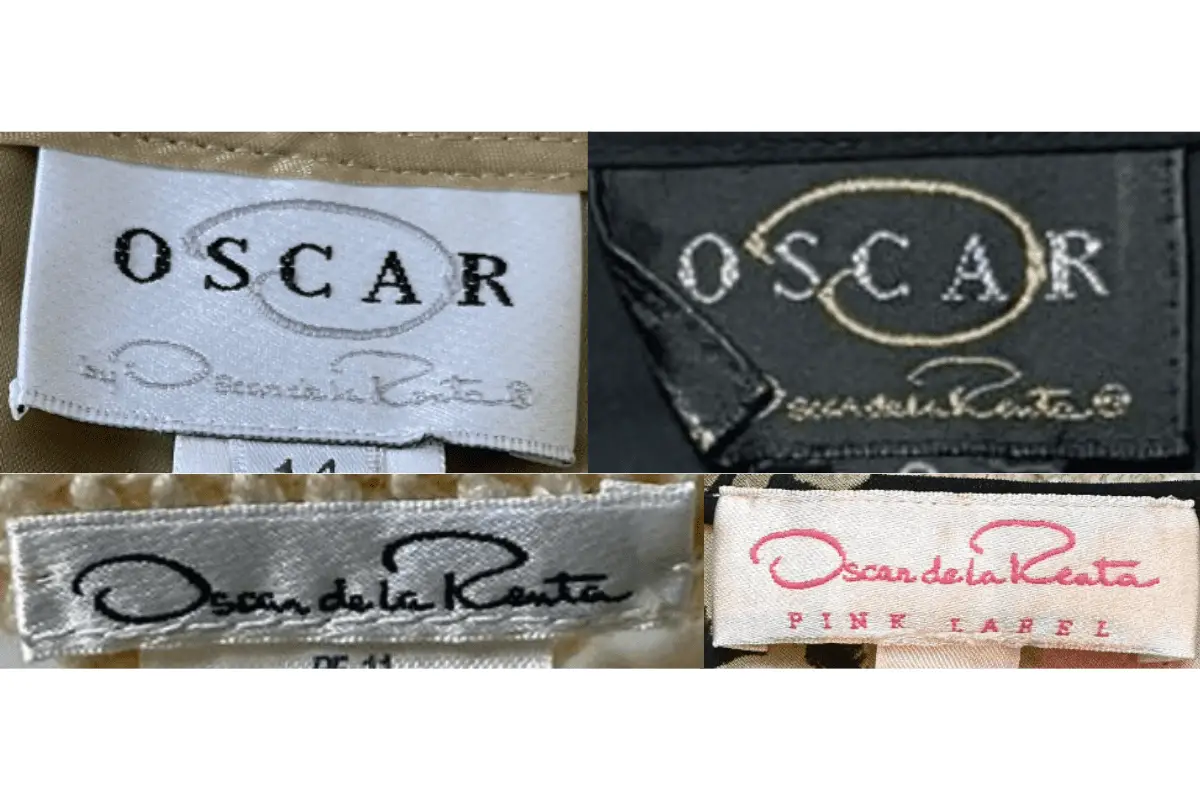
2000s Oscar de la Renta tags
2010s vintage Oscar de la Renta tags
- The tags from this decade reflect a contemporary approach while retaining the brand’s classic identity.
- Use of a wider variety of materials and colors in tags, including more distinct and colorful labels for different collections.
- Continued refinement of the logo, often simplified yet still elegant.
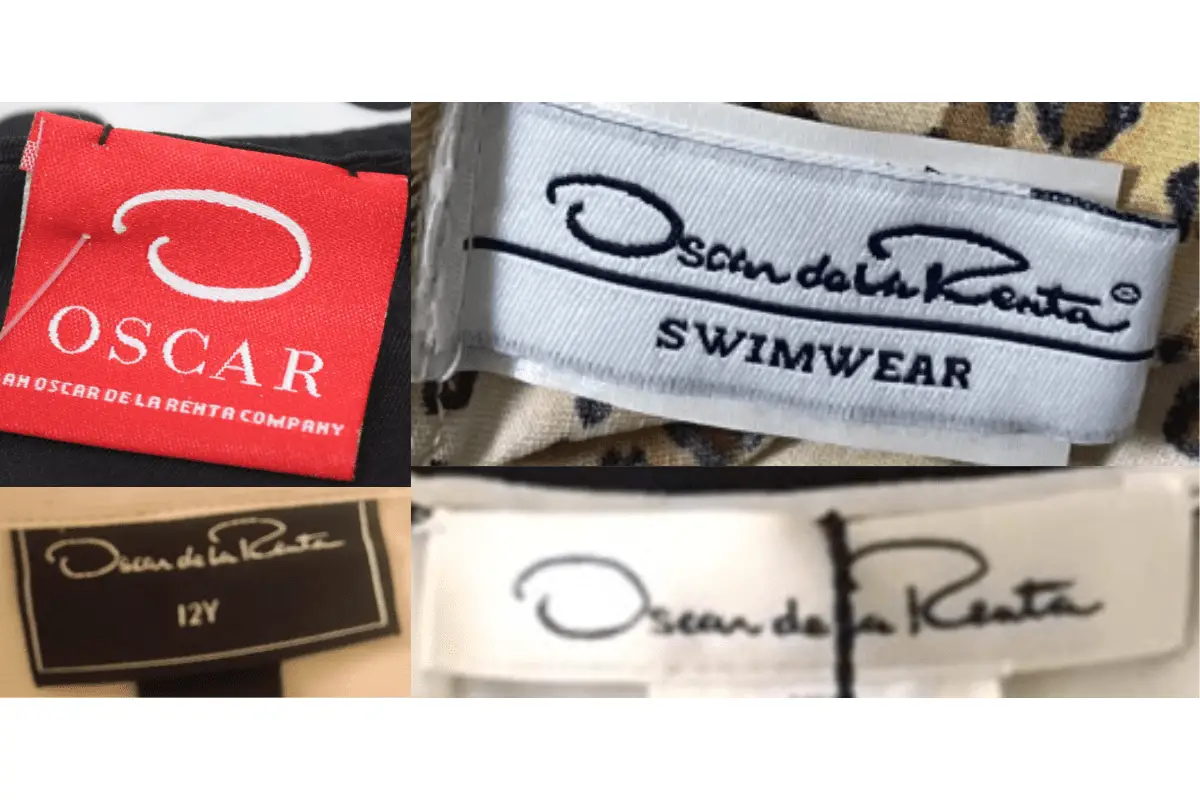
2010s Oscar de la Renta tags
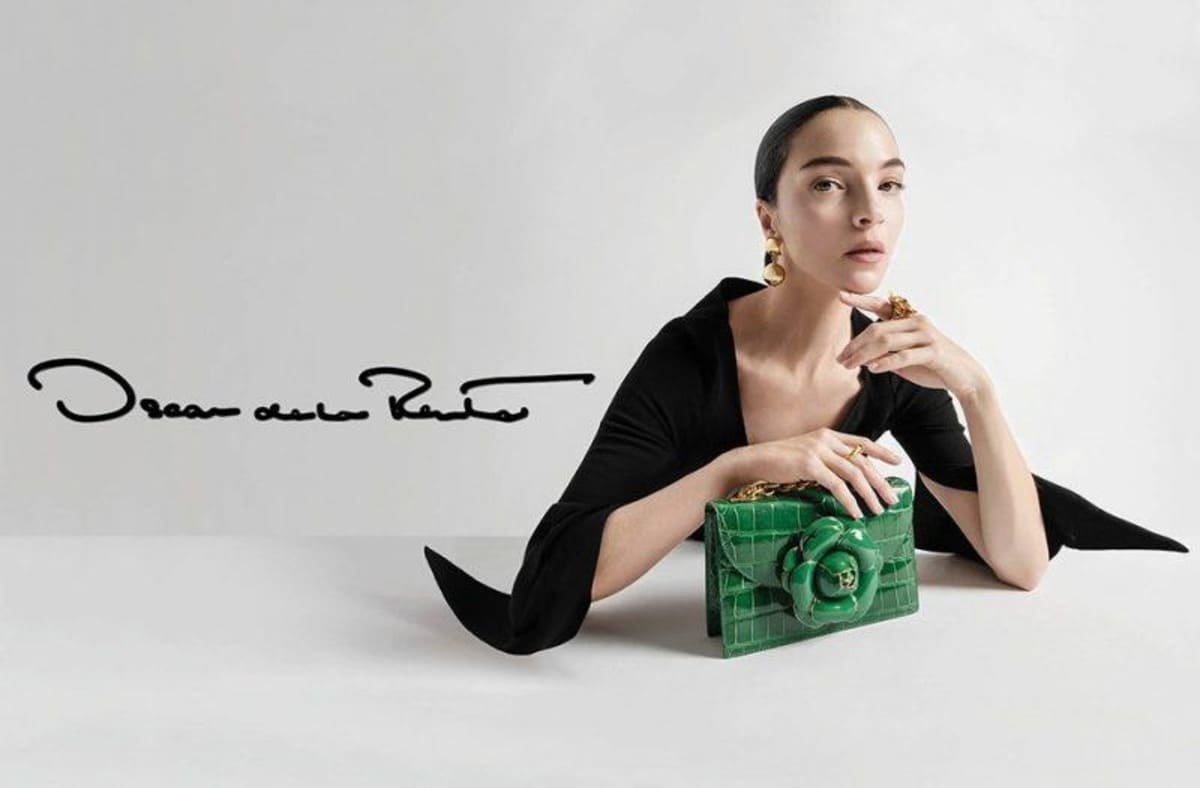


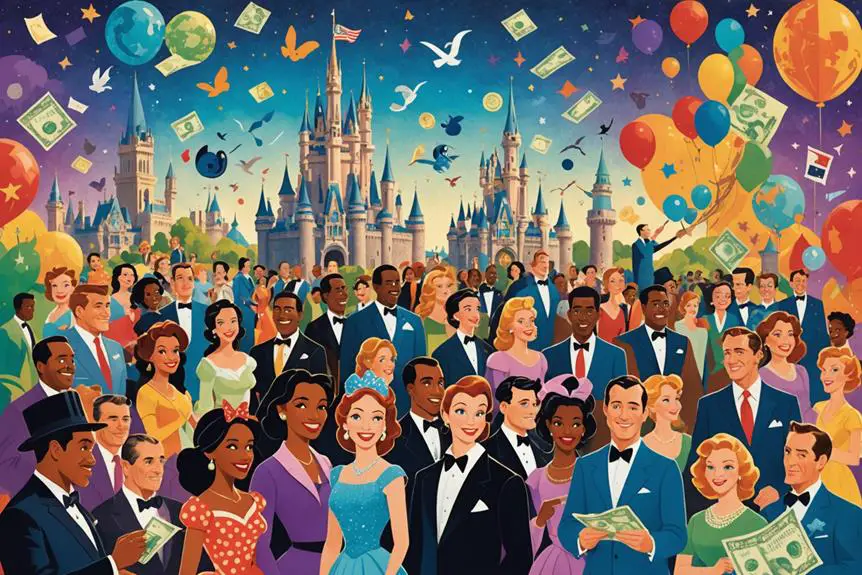
Thanks – Enjoyed this update, how can I make is so that I get an alert email when you write a fresh update?
Glad I detected this on google .
Thanks a bunch for sharing this with all people you actually recognize what you are speaking about! Bookmarked. Please additionally consult with my website =). We will have a hyperlink exchange agreement among us!